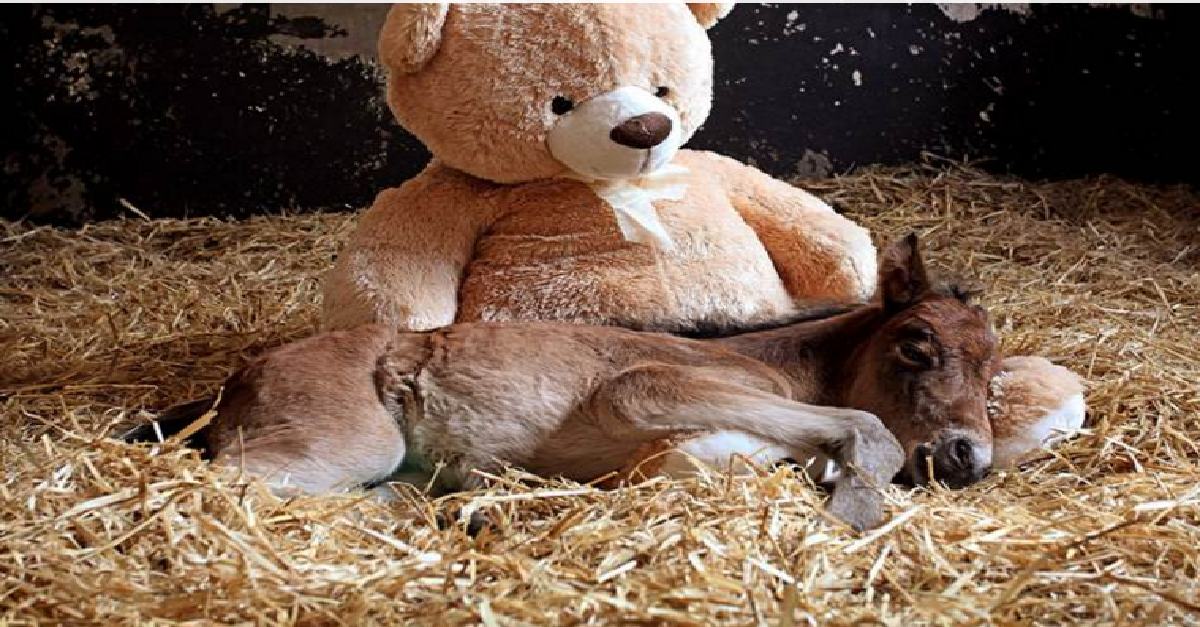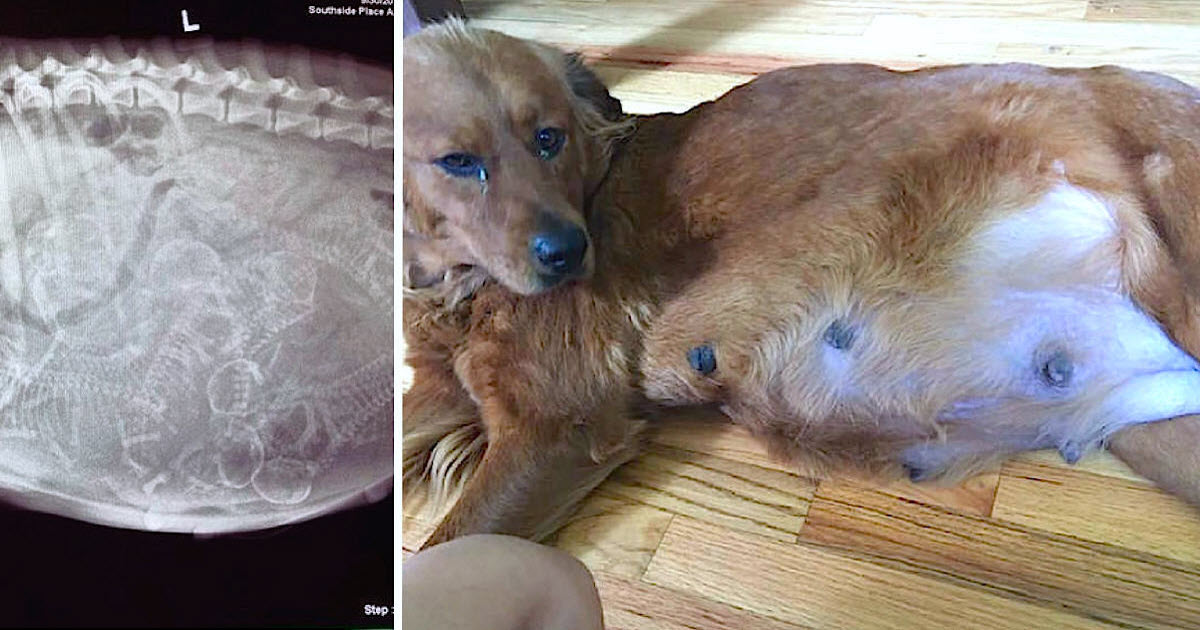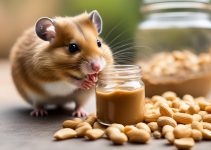Greetings, fellow hermit crab enthusiasts! Today, I invite you to delve into the fascinating world of hermit crab nutrition. As responsible caretakers, we strive to provide our crustacean companions with a diet that meets their dietary needs and keeps them happy and healthy.
In the wild, hermit crabs embrace their omnivorous nature, enjoying a diverse menu of both plant and animal matter. But what should we feed these curious creatures when they are living in captivity? Let’s explore the essential components of a well-rounded hermit crab diet.
What Do Hermit Crabs Eat
- Hermit crabs are omnivores, meaning they eat both plant and animal matter.
- A balanced commercial food should be the foundation of their diet, supplemented with fresh foods and treats.
- Reputable commercial food brands for hermit crabs include Florida Marine Research and Zoo Med.
- Fresh foods like fruits, vegetables, and protein sources provide essential nutrients and variety.
- Ensure access to both fresh water and salt water, along with sources of calcium for molting.
Commercial Diets for Hermit Crabs
When it comes to providing a balanced and convenient diet for your hermit crabs, commercial diets are a great option. Brands such as Florida Marine Research and Zoo Med offer high-quality commercial foods that are specifically formulated for hermit crabs. These diets are designed to provide the essential nutrients and vitamins that hermit crabs need to thrive.
Commercial pelleted foods are a staple in a hermit crab’s diet. They are easy to feed and can be given once a day. For smaller crabs, it is recommended to crush the pellets to make them easier to consume. These pelleted foods are a balanced source of nutrition and contain a mix of proteins, carbohydrates, and essential minerals.
While commercial diets are a good foundation, it is important to supplement them with fresh foods. Including a variety of fruits, vegetables, and protein sources in your hermit crab’s diet will provide them with a diverse range of nutrients. Offer fresh foods and treats on a rotating basis to keep their diet interesting and varied.
Remember to remove any uneaten food daily to maintain cleanliness in the crab enclosure and prevent the food from spoiling. Regularly monitoring your hermit crab’s diet is essential to ensure they receive the balanced nutrition they need.
Fresh Foods and Treats for Hermit Crabs
Hermit crabs enjoy a varied diet, so it’s important to offer a wide variety of fresh foods and treats. By incorporating fresh foods and treats into their diet, you can provide the necessary nutrients and add excitement to their feeding routine.
Fresh Foods
Some examples of fresh foods that hermit crabs can enjoy include:
- Mangoes
- Papayas
- Apples
- Bananas
- Grapes
- Pineapples
- Strawberries
- Melons
- Carrots
- Spinach
- Watercress
- Leafy green lettuces
- Broccoli
- Grass
These fresh foods provide essential vitamins, minerals, and fiber to support the health and well-being of your hermit crabs.
Treats
To add some variety to their diet, hermit crabs can also enjoy a selection of treats. These treats can be offered occasionally and in moderation. Here are some examples:
- Nuts
- Peanut butter (occasionally)
- Raisins
- Seaweed
- Crackers
- Unsweetened cereals
- Plain rice cakes
- Popcorn
These treats can be a special indulgence for your hermit crabs, providing them with added flavor and a fun snacking experience.
It’s important to note that the list of fresh foods and treats for hermit crabs is not exhaustive. You can also experiment with other fruits, vegetables, and safe food items to keep their diet interesting and diverse. However, it’s essential to avoid highly acidic or citrus foods, as they can be harmful to hermit crabs.
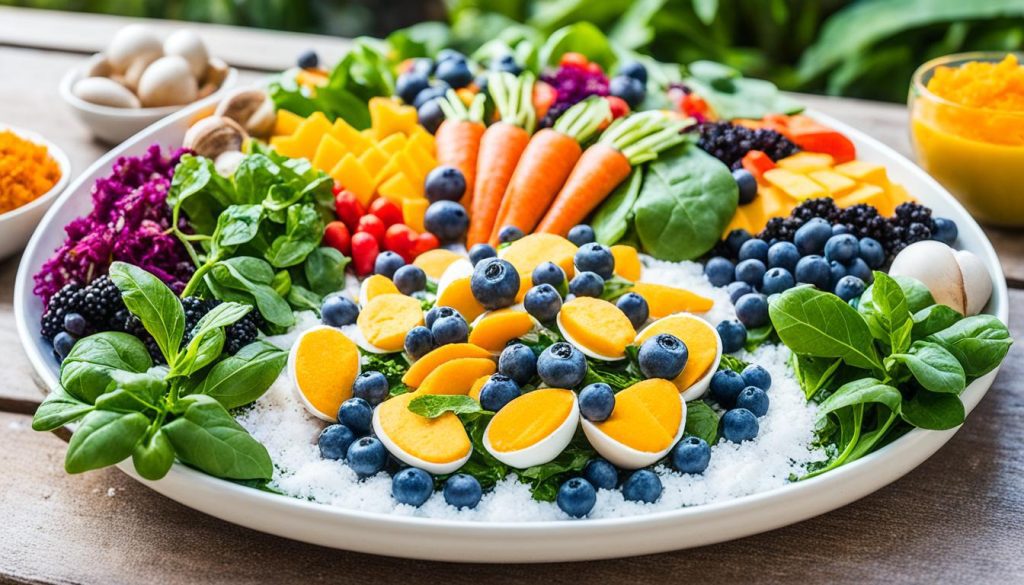
Calcium Sources for Hermit Crabs
Hermit crabs need calcium to support the health of their exoskeletons, especially during molting. Providing ample calcium is crucial for their overall health and well-being.
There are several calcium sources you can offer to your hermit crabs:
- 1. Cuttlebone: Cuttlebone is a popular and readily available calcium source for hermit crabs. It can be placed in the enclosure, allowing the crabs to nibble on it as needed.
- 2. Calcium vitamin supplements for reptiles: These supplements are specifically formulated to provide essential minerals, including calcium, for reptiles. They can also be beneficial for hermit crabs when used as directed.
- 3. Crushed oyster shell: Crushed oyster shell is another effective calcium source that can be added to hermit crab food or provided separately. It provides a natural and easily digestible form of calcium.
- 4. Coral sand: Coral sand, which is rich in calcium carbonate, can be used as a substrate in the hermit crab enclosure. As the crabs dig and burrow, they can ingest small amounts of the substrate, thereby consuming calcium.
- 5. Crushed egg shells: Boiled, dried, and crushed egg shells are a natural and readily available source of calcium. They can be sprinkled onto the hermit crab food or provided as a separate calcium supplement.
These calcium sources are essential for the health and development of hermit crabs. By incorporating them into their diet, you can ensure that your hermit crabs have the necessary calcium intake to support their exoskeletons and overall well-being.
Water Requirements for Hermit Crabs
All species of hermit crabs require access to both fresh water and salt water to meet their specific water requirements. Fresh water is essential for drinking, while salt water serves multiple purposes, including drinking and occasional bathing.
When providing fresh water for hermit crabs, it is important to treat the water with a dechlorinator to remove harmful chlorine and chloramines that may be present in tap water. This helps ensure the water is safe for the crabs to drink.
The salt water for hermit crabs can be prepared using a product specifically designed for marine fish tanks, such as Instant Ocean. The desired salinity of the water may vary depending on the species, but it is generally recommended to mix the proportion of salt and water indicated for a saltwater (marine) fish tank.
To ensure the well-being of hermit crabs, it is crucial to provide separate water dishes for both fresh water and salt water. The dishes should be shallow, sturdy, and easy to clean. It is also helpful to add natural seashells and sea sponges to the water dishes. These additions not only help regulate humidity levels but also provide additional sources of drinking water for the crabs.
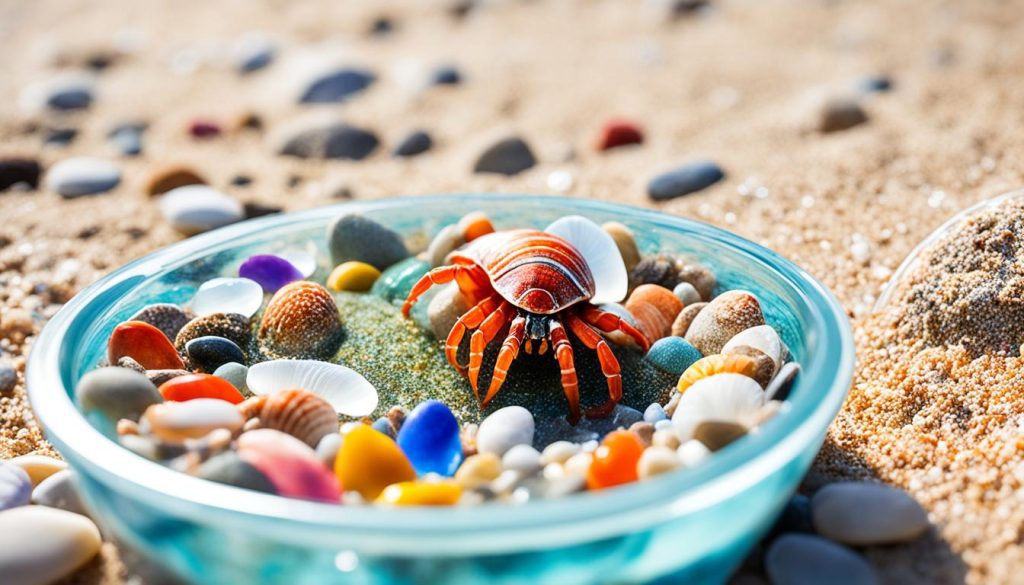
By satisfying the water requirements of hermit crabs and offering them access to both fresh water and salt water, you are providing them with the necessary hydration and environmental enrichment they need to thrive.
Creative Food Ideas for Hermit Crabs
Beyond the traditional commercial food and fresh foods, there are several creative food ideas that can be offered to hermit crabs. These alternative food options can provide variety and enrichment for your hermit crab’s diet.
- Make a popcorn treat using plain corn kernels and coconut or vegetable oil. Pop the kernels in a covered pan, and when they’re done, sprinkle them with a small amount of coconut or vegetable oil. Be sure to let the popcorn cool before offering it to your hermit crab.
- Plant a chia garden in the crab enclosure using chia seeds. Spread a layer of potting soil in a small container or planter, sprinkle chia seeds on top, and lightly water. Watch as the seeds sprout and grow, providing a nutritious and edible treat for your hermit crab.
- Offer leftovers from organic produce and eggs such as apple cores and eggshells. Hermit crabs can enjoy nibbling on apple cores, and ground-up eggshells can provide a source of calcium for their shells.
Remember, it’s important to introduce new foods gradually and monitor your hermit crabs’ reactions. They may have specific preferences and dietary needs, so always consult with a hermit crab expert or veterinarian for guidance.
Conclusion
To ensure the optimal health and happiness of hermit crabs, it’s important to provide a balanced diet that includes a variety of commercial foods, fresh foods, treats, and calcium sources. Hermit crabs are omnivores, meaning they require both plant and animal matter in their diet. By offering a diverse and nutritious diet, hermit crabs can thrive and enjoy a long and happy life.
Commercial diets specifically formulated for hermit crabs, such as those from Florida Marine Research and Zoo Med, serve as convenient and well-balanced options. These diets should be supplemented with fresh foods, including fruits, vegetables, and protein sources. It’s crucial to remove any uneaten food, including commercial pellets, daily to maintain cleanliness in the crab enclosure.
In addition to commercial diets, fresh foods and treats play a crucial role in providing a varied diet for hermit crabs. Mangoes, papayas, apples, carrots, spinach, shrimp, and fish flakes are just some examples of the wide range of foods that can be offered. It’s important to note that highly acidic or citrus foods should be avoided. Calcium sources, such as cuttlebone and crushed oyster shell, are also essential to support the health of hermit crabs’ exoskeletons, especially during molting.
Lastly, water requirements for hermit crabs should be met by providing both fresh water and salt water. Fresh water is necessary for drinking, while salt water is consumed and sometimes used for bathing. Using a dechlorinator for fresh water and a marine fish tank product like Instant Ocean for salt water helps ensure suitable water quality. Shallow, sturdy, and easy-to-clean dishes are recommended, and natural seashells and sea sponges can be added to provide humidity regulation and drinking water for the hermit crabs.


